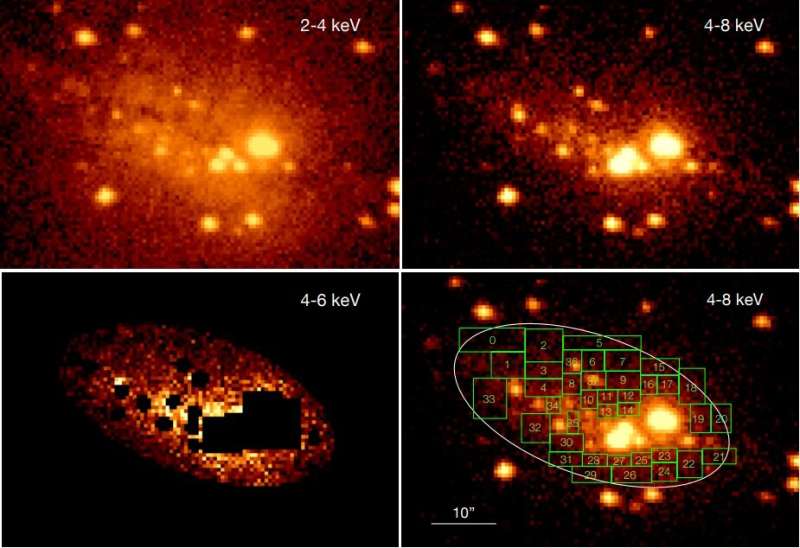March 27, 2023 report
This article has been reviewed according to Science X's editorial process and policies. Editors have highlighted the following attributes while ensuring the content's credibility:
fact-checked
preprint
trusted source
proofread
Study investigates diffuse emission from the Cigar Galaxy

Using NASA's Chandra spacecraft, an international team of astronomers has performed X-ray observations of the Cigar Galaxy. Results of the observational campaign, presented March 16 on the pre-print repository arXiv, deliver crucial information regarding diffuse emission from this galaxy.
Discovered in 1774, Cigar Galaxy (Messier 82, or M82) is a starburst galaxy located some 11.73 million light years away in the constellation Ursa Major. It has a size of about 40,800 light years and is one of the closest starburst galaxies to Earth.
Observations of the Cigar Galaxy have found that it experiences a large-scale galactic wind at various wavelengths, for instance, in hard X-rays above a few keV. This superwind appears to be concentrated in the galaxy's two high surface brightness regions or clumps, and is fueled by energy released by supernovae within the clumps that occur at a rate of about one every ten years. Previous Chandra studies of this galaxy have detected bright X-ray binaries that dominate the hard X-ray band and revealed that there is residual diffuse emission surrounding the starburst disk.
Recently, a group of astronomers led by Kazushi Iwasawa of the University of Barcelona, Spain, decided to take a closer look at this diffuse emission from the Cigar Galaxy. They used Chandra to conduct a spatially resolved spectral analysis of the diffuse emission in the 4–8 keV band.
"We present the first spatially resolved, X-ray spectroscopic study of the 4–8 keV diffuse emission found in the central part of the nearby starburst galaxy M82 on a few arcsecond scales. The new details that we see allow a number of important conclusions to be drawn on the nature of the hot gas and its origin as well as feedback on the interstellar medium," the researchers explained.
The observations found that the 4–8 keV diffuse emission from the Cigar Galaxy is composed of three spectral components with distinct origins. The first one, inverse Compton emission—carries about 70% of the continuum luminosity in the band. The second one is the hard tail of the soft X-ray wind emission, and the remaining component is a metal-rich, hot gas emission.
The morphology of the diffuse X-ray emission from the Cigar Galaxy resembles those of the far-infrared and radio emission. This suggests inverse Compton scattering off the far-infrared photons by cosmic ray electrons as the hypothesis explaining the origin of the non-thermal emission.
Furthermore, the study detected hot gas in a limited area near the galactic disk. The gas appears to flow out from the eastern part of the starburst ring and fills the so-called chimneys (collimated structures of a super bubble breaking out of the galactic disk) marked by mid-infrared and radio voids. These chimneys were found to dominate in transporting the flow of supernova energy from the disk to halo.
The research also found that the brightest, young X-ray and radio supernova remnants in the Cigar Galaxy reside in giant molecular clouds that are presumably newly formed and therefore free from strong supernova feedback.
More information: K. Iwasawa et al, Origin of the diffuse 4-8 keV emission in M82, arXiv (2023). DOI: 10.48550/arxiv.2303.09637
Journal information: arXiv
© 2023 Science X Network





















